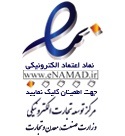VI. CONCLUSION AND FUTURE WORK
Carrying forward our work [23], [24] here we present the result of the efficient utilization of resources in the network infrastructure by efficiently deploying Application Modules in Fog-Cloud Infrastructure for IoT based applications. We present the impact of an evolving paradigm that is Fog Computing towards solving the problem of latency in time critical IoT applications, while also accounting for the pressure on the existing network resources owing to the exponentially increasing workload due to heavy IoT usage in daily life across myriad sectors.
We outlined the key characteristics that impact the performance of such IoT applications, and have classified and kept into account the static part while increasing the network efficiency and broadening the scope of such applications. The logarithmic complexity of the Module Mapping Algorithm as proposed in the paper trumps the usual Brute Force solution to such problems, which tends to be NP-hard.
We believe that the result of this work can serve as a Micro-benchmark in studies/research related with IoT and Fog Computing, as the algorithmic approach is generic and the case study of the application has been developed keeping in mind several inline use cases applying to a wide range of IoT and Fog/Cloud applications over varied network topologies. The result obtained can thus be used for QoS and Service Level Objective benchmarking for IoT applications.








